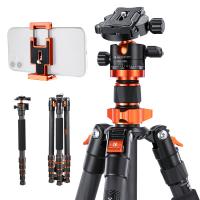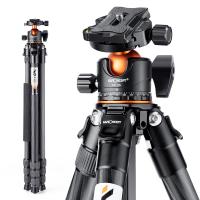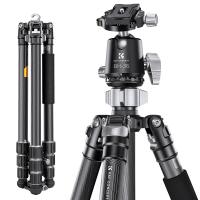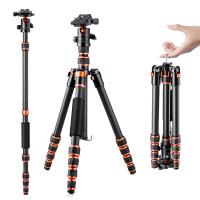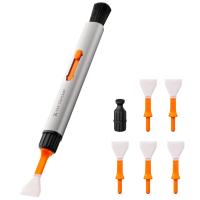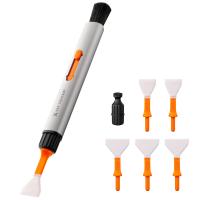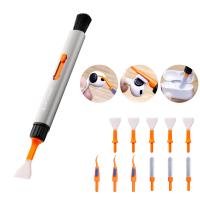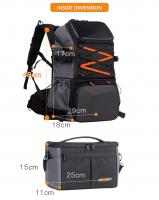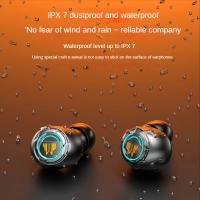How To Choose A Carbon Fiber Tripod
2023-10-27 08:57:19
For landscape photography, a sturdy, versatile tripod is arguably the best investment you can make for sharper images—and sharpness is critical for successful photographs. Unintentional softness and blur will render photos of even the most stunning scenes unusable. That’s true for every photographic subject, but especially for richly detailed landscape compositions.
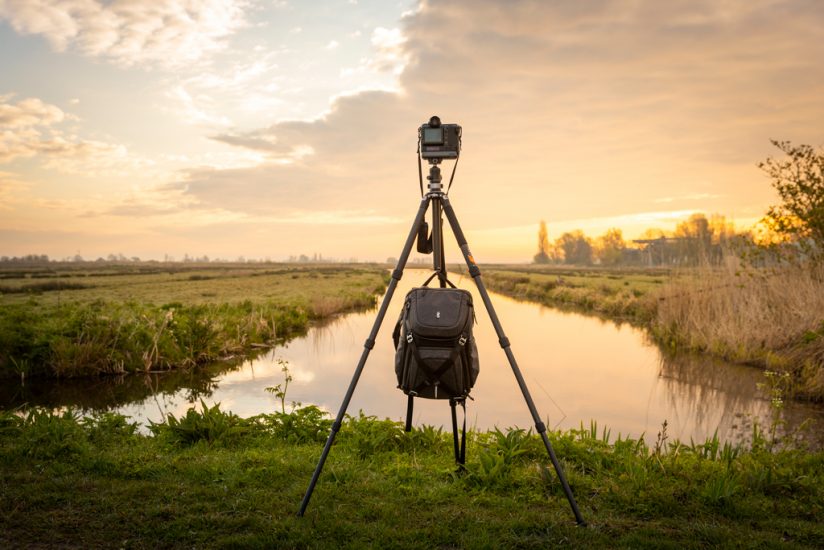
Though modern image stabilization systems in cameras and lenses can help, even the most sophisticated systems have limitations, especially in low-light shooting conditions such as sunrise and sunset which landscape photographers usually prefer.
In addition to ensuring maximum stability to optimize sharpness, shooting from a tripod can also help in the process of precisely refining your framing of the scene, and tripods are essential for techniques like focus stacking and multi-shot HDR. Every landscape photographer should own and use a high-quality tripod.
If you’re looking for your first tripod, you might be tempted to start with an inexpensive model, but you’re likely to be disappointed in its stability and durability and end up replacing it. You’ll save money in the long run by investing in a high-quality, full-featured tripod—and you’ll reap the benefits right away.
The Benefits Of Carbon Fiber Tripods Over Aluminum
There are several features and characteristics you want to consider when choosing a tripod. One of the first options is the material used for the tripod legs. The two most popular materials are carbon fiber and aluminum. Both carbon fiber and aluminum provide good stability and vibration dampening, but professional photographers generally recommend carbon fiber models because they offer a few important advantages.
The first advantage of a carbon fiber tripod over aluminum is the material’s lighter weight. When you’re carrying a camera, multiple lenses, plus accessories like filters, extra batteries and more, weight can add up quickly. The difference between carbon fiber tripods and aluminum models will vary by design, but carbon fiber will be roughly 20 percent lighter, which can shed a pound or more from the total weight. It may not sound like a lot, but you’ll appreciate the difference in the field.
Carbon fiber is also a more rigid material, offering better stiffness to support your camera than a comparable aluminum design. This is more important for outdoor photography than for studio work, as a sturdier tripod will provide better stability in inclement weather such as strong winds.
Another advantage of carbon fiber tripods for landscape photography is their overall weather and corrosion resistance. As a material, carbon fiber is much more durable and impervious to corrosion, while aluminum will degrade over time with exposure to the elements. Investing in carbon fiber will pay dividends for years to come in terms of durability in outdoor conditions.
Features To Look For In A Tripod
Beyond the question of carbon fiber versus aluminum, there are several other features to consider when choosing a tripod for landscape photography. Choosing a tripod with maximum versatility is a wise investment.
Maximum & Minimum Height Range
One of the first things to think about is the height range of the tripod. Its maximum height should be tall enough to allow you to work comfortably at or near eye level. Taller photographers may have to lean over a bit, but in general a good tripod for landscape photography should be about 5.5 feet or taller at its maximum height.
Perhaps more important for nature photography is the tripod’s minimum height. A short minimum height is very desirable when you want to get low to the ground for more interesting scenic compositions with prominent foreground objects, or if macro photography is part of your portfolio.
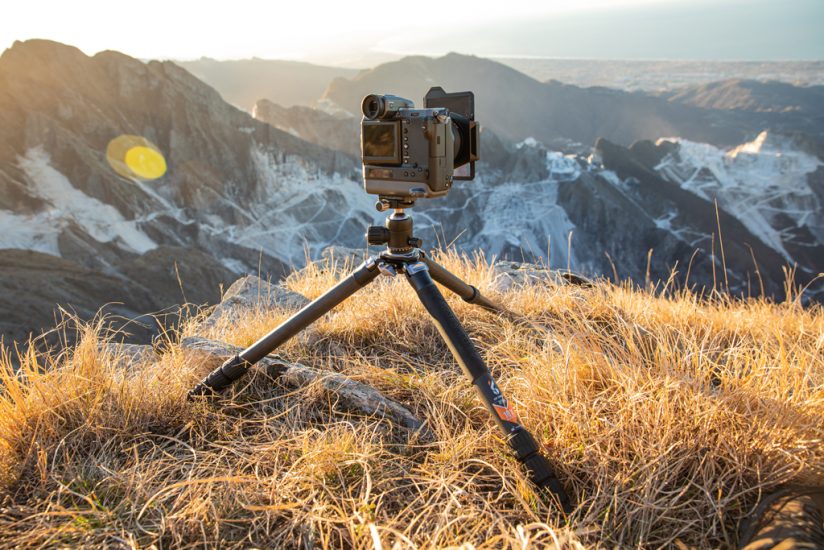
The K&F CONCEPT X324C4 offers a generous height range that can extend from just 3 inches for low-to-the-ground compositions all the way to 5 feet 10 inches for comfortable eye-level shooting. It also collapses down to a compact 25 inches in length (including the ball head) for easier packing. The tripod includes a padded canvas carrying case with an integrated tool pocket.
Removable Center Column
Most but not all tripod legs include a center column. Center columns are useful for making small height adjustments without needing to readjust the tripod legs when framing your composition.
For maximum versatility, look for a tripod that allows you to reverse the center column or remove it entirely. This is another benefit that you’ll appreciate when trying to shoot as low to the ground as possible. With the option to reverse or remove the center column, you’ll have the most flexibility to position your camera exactly where you want it.
With the K&F CONCEPT X324C4’s removable center column, you can leave it in place when maximum height or incremental height changes are needed or remove it easily when shooting low. You can also reverse the center column.
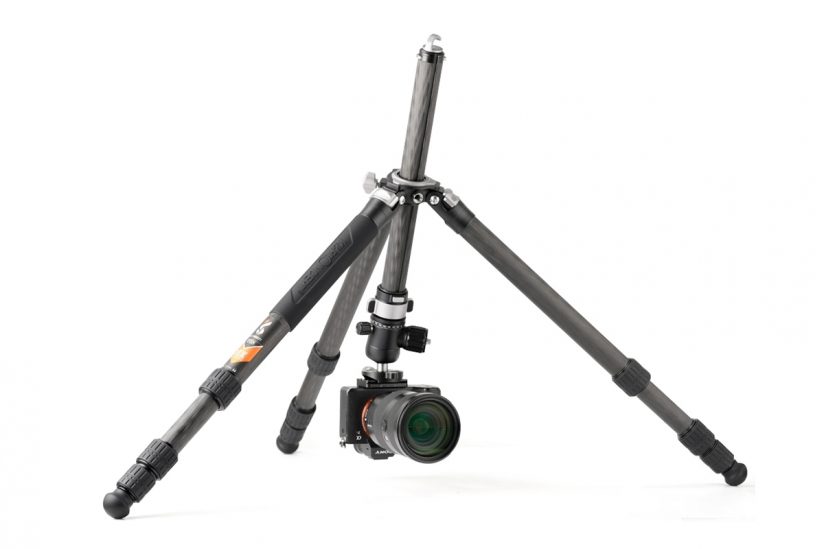
The X324C4’s center column also features a weight hook at its base, allowing you to hang a weight bag for additional stability in extreme wind conditions.
Load Capacity
Consider the cameras and lenses in your bag when comparing the load capacity of your tripod. Though many of the latest cameras and lenses are incredibly light, if you shoot with telephoto zooms or heavier cameras, you’ll want to be sure your tripod and head combination can handle their weight. It’s smart to choose a tripod that can support more weight than you anticipate needing it to, as you don’t want to push the tripod’s limits and potentially compromise its stability.
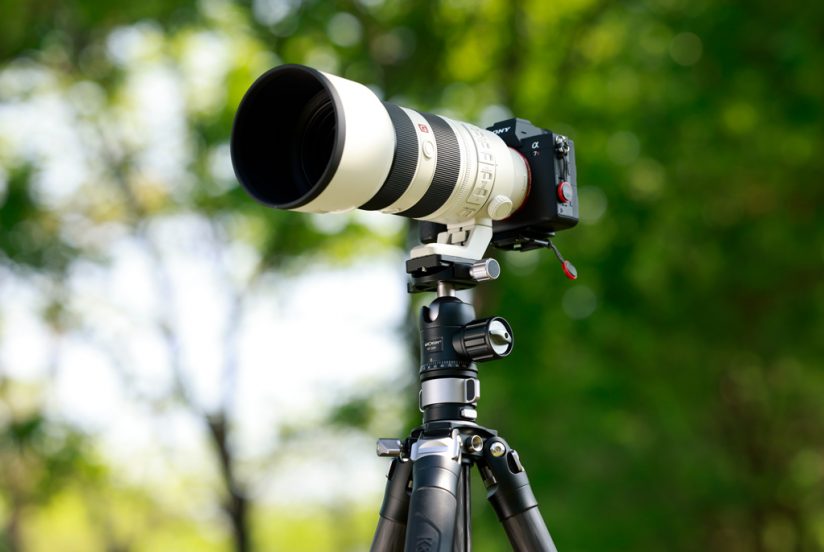
With a maximum payload of 44 pounds, the K&F CONCEPT X324C4 has more than enough capacity to support practically any camera and lens combination, even super telephoto primes. And since the ball head is included with the tripod, you can be confident that that the legs and head will meet this weight capacity specification.
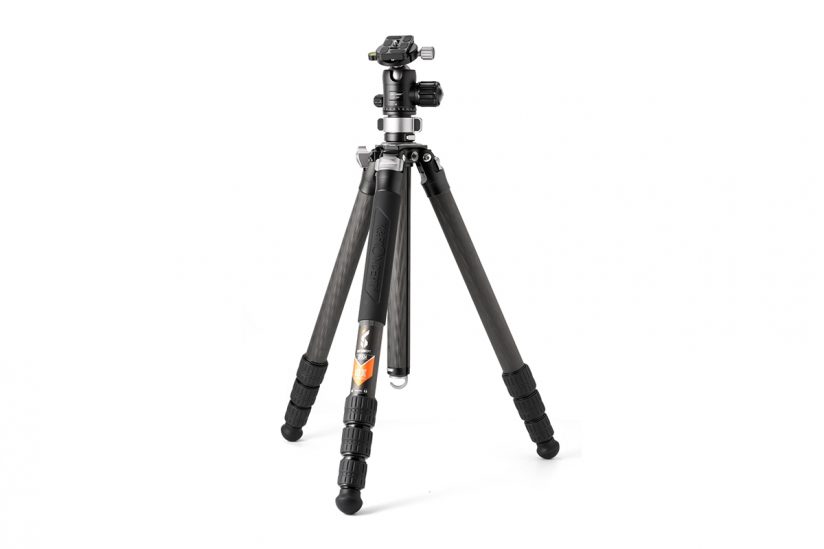
Leg Adjustments
When evaluating the tripod legs, there are a few things to think about. The first is the type of locks used to secure the leg segments in position. One option is a flip lock and the other is a twist lock. Of the two, most pros prefer the twist lock style. They’re more comfortable to use in general with no risk of pinching your fingers and much easier work with when wearing gloves in cold or rainy conditions.
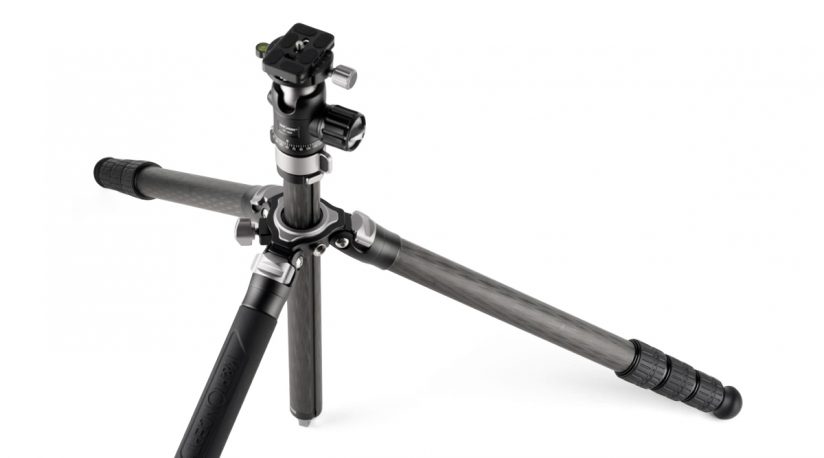
The next feature of the tripod’s leg adjustments to evaluate is whether you can vary the angles of the legs. This is especially important for low to the ground shooting and macro photography as you can get much lower with the legs splayed out than if they are limited to a fixed angle. Legs with adjustable angles are also very useful when working on uneven surfaces such as a hillside, allowing you to position each leg independently to compensate for the incline.
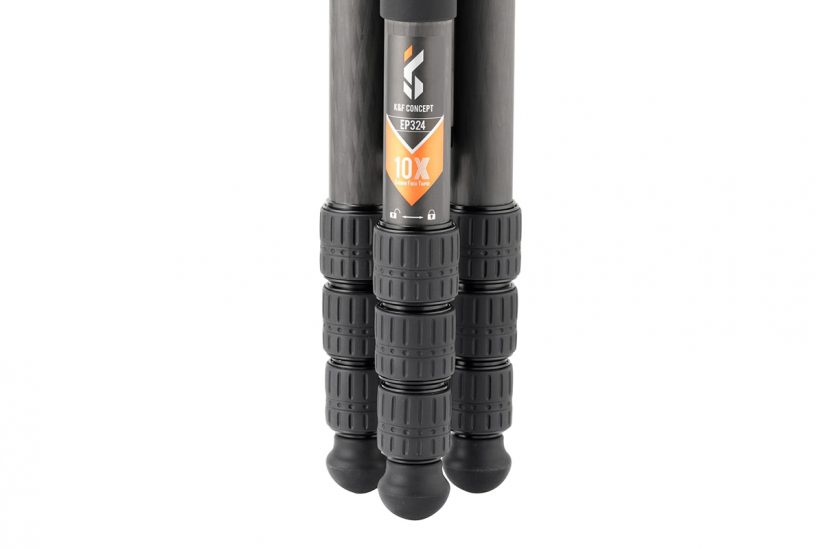
One more detail of the tripod’s legs to consider is their feet. Most tripods have some type of rubber padding to provide cushion and prevent skidding. Even better is the option to swap the rubber feet for spikes, a helpful feature when shooting on loose or icy terrain for extra stability. Some tripods even have integrated spikes concealed beneath their rubber feet so all you need to do is unscrew the rubber covers—no tools required.
The K&F CONCEPT X324C4 has three-segment legs with quick quarter-turn leg adjustment locks that are easy to use even when wearing heavy winter gloves. The ability to quickly adjust the leg segments is especially helpful when refining your composition in rapidly changing light or atmospheric conditions.
Each of the legs can be independently angled via multi-angle leg locks, allowing you compensate for elevation changes on uneven terrain for maximum stability. The tripod’s padded rubber feet can also be removed to reveal spikes for additional stability in rugged or icy terrain.
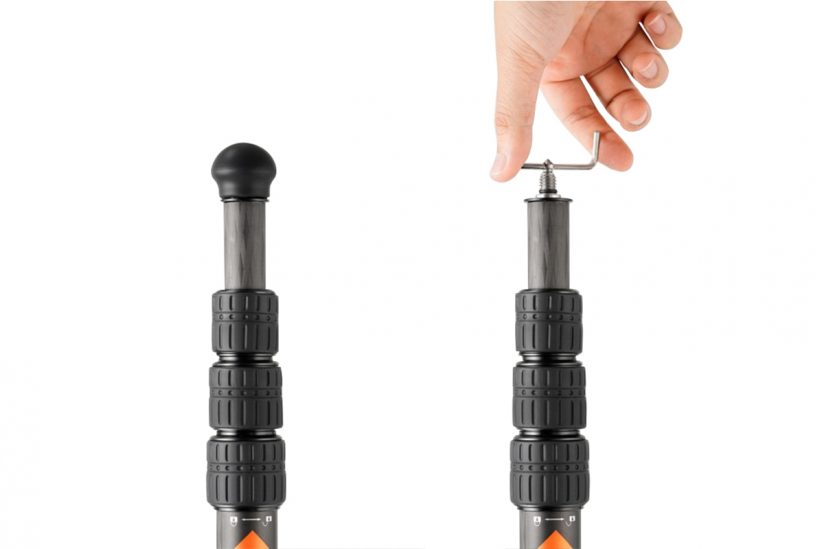
Tripod Heads
Many tripods include a head with the legs, while other models are sold without the head. Whether you choose a tripod that includes the head or not, you’ll want to think about the type of head you use.
There are specialty heads that are primarily for specific applications such as fluid heads for video, or gimbals for wildlife photography with super telephoto lenses, but for most still photography and for landscape work in particular, a ball head is by far the most popular choice. Ball heads are very easy to use, with a single tension knob that enables quick adjustments and superior maneuverability.
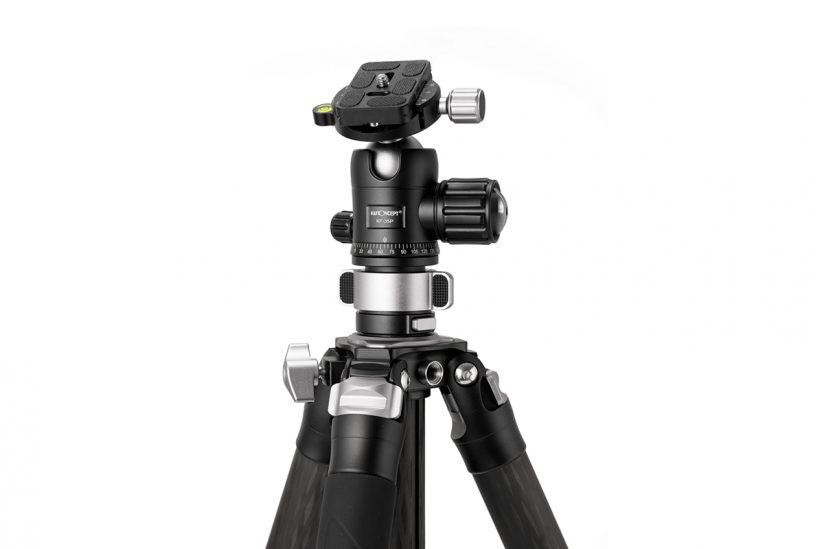
Some ball heads also incorporate a separate panning adjustment that allows you greater control when fine-tuning your framing or when shooting multiple frames for panoramas.
One final detail of the tripod head to look at is the mechanism for attaching your camera. All tripod heads will have a standard screw that fits the socket on the bottom of your camera. Cheaper heads may have a fixed plate that can’t be removed from the head. Better heads will have some style of quick-release plate that allows you to remove the camera from the tripod without unscrewing the plate. The professional standard, known as Arca-Swiss, is the preferred mechanism due to it universal nature. All Arca-Swiss compatible plates and L-brackets work interchangeably.
The ball head included with the K&F CONCEPT X324C4 is a professional quality head with large control knobs for improved operability when wearing gloves. The ball locking knob has an integrated friction limit control dial that allows you to adjust the responsiveness of the locking knob, making fine-tuning of your camera’s position easier.
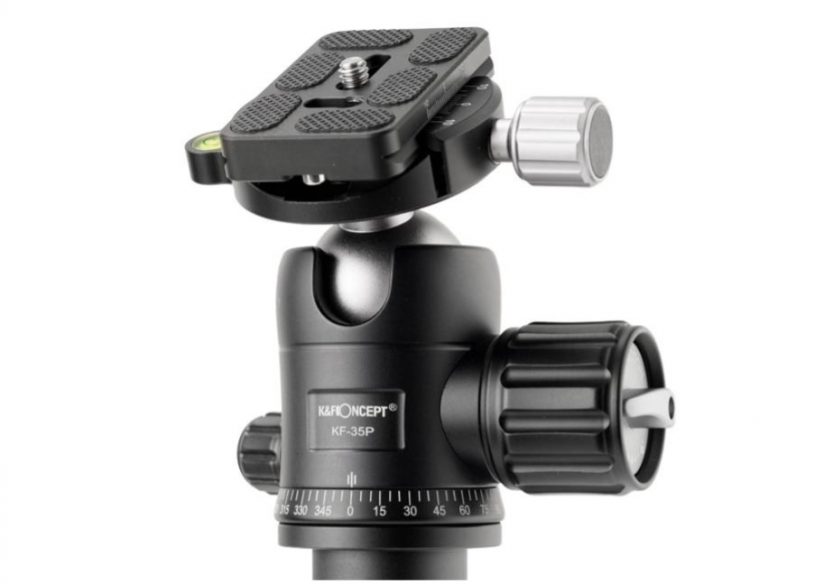
A separate pan adjustment with 360-degree markings allows you to precisely position your camera and lock it in place and then pan horizontally to follow action or reframe for multi-shot panoramas.
The head includes an Arca-Swiss compatible quick-release camera plate with non-slip rubber pads, a finger twistable screw (no screwdriver or coin needed) and a gauge to assist with precise focusing rail adjustments for macro photography. There’s also an integrated bubble level.
K&F CONCEPT X324C4 Hands-On Review
“With the ultra-high resolution of the current generation of digital cameras, a steady camera is more important than ever, meaning that selecting a good quality tripod is more important than ever,” says Bryan Carnathan of The-Digital-Picture.com, a website that has provided trusted photography gear reviews for nearly 20 years. “To state it succinctly,” he concludes in his hands-on review, “the K&F CONCEPT X324C4 Multifunction Carbon Fiber Tripod is a great deal. The price would represent a good value without the ball head, but including the head makes this kit an especially great value.”
New K&F CONCEPT X284C2 Tripod
K&F CONCEPT is always innovating with new designs. Coming soon, the X284C2 tripod will offer the same performance and versatility of the K&F CONCEPT X324C4 with surprising improvements.
Learn More About K&F CONCEPT’s Innovations
With over 150 patents, K&F CONCEPT creates a range of innovative photographic accessories, including filters, tripods, backpacks and lens adapters—with more to come—and has been recognized with international design awards including iF Design Award 2021 and RedDot Product Design 2021. With K&F CONCEPT, See the Unseen. For more information on K&F CONCEPT products and the X PRO Square Filter System, visit kfconcept.com.

Though modern image stabilization systems in cameras and lenses can help, even the most sophisticated systems have limitations, especially in low-light shooting conditions such as sunrise and sunset which landscape photographers usually prefer.
In addition to ensuring maximum stability to optimize sharpness, shooting from a tripod can also help in the process of precisely refining your framing of the scene, and tripods are essential for techniques like focus stacking and multi-shot HDR. Every landscape photographer should own and use a high-quality tripod.
If you’re looking for your first tripod, you might be tempted to start with an inexpensive model, but you’re likely to be disappointed in its stability and durability and end up replacing it. You’ll save money in the long run by investing in a high-quality, full-featured tripod—and you’ll reap the benefits right away.
The Benefits Of Carbon Fiber Tripods Over Aluminum
There are several features and characteristics you want to consider when choosing a tripod. One of the first options is the material used for the tripod legs. The two most popular materials are carbon fiber and aluminum. Both carbon fiber and aluminum provide good stability and vibration dampening, but professional photographers generally recommend carbon fiber models because they offer a few important advantages.
The first advantage of a carbon fiber tripod over aluminum is the material’s lighter weight. When you’re carrying a camera, multiple lenses, plus accessories like filters, extra batteries and more, weight can add up quickly. The difference between carbon fiber tripods and aluminum models will vary by design, but carbon fiber will be roughly 20 percent lighter, which can shed a pound or more from the total weight. It may not sound like a lot, but you’ll appreciate the difference in the field.
Carbon fiber is also a more rigid material, offering better stiffness to support your camera than a comparable aluminum design. This is more important for outdoor photography than for studio work, as a sturdier tripod will provide better stability in inclement weather such as strong winds.
Another advantage of carbon fiber tripods for landscape photography is their overall weather and corrosion resistance. As a material, carbon fiber is much more durable and impervious to corrosion, while aluminum will degrade over time with exposure to the elements. Investing in carbon fiber will pay dividends for years to come in terms of durability in outdoor conditions.
Features To Look For In A Tripod
Beyond the question of carbon fiber versus aluminum, there are several other features to consider when choosing a tripod for landscape photography. Choosing a tripod with maximum versatility is a wise investment.
Maximum & Minimum Height Range
One of the first things to think about is the height range of the tripod. Its maximum height should be tall enough to allow you to work comfortably at or near eye level. Taller photographers may have to lean over a bit, but in general a good tripod for landscape photography should be about 5.5 feet or taller at its maximum height.
Perhaps more important for nature photography is the tripod’s minimum height. A short minimum height is very desirable when you want to get low to the ground for more interesting scenic compositions with prominent foreground objects, or if macro photography is part of your portfolio.

The K&F CONCEPT X324C4 offers a generous height range that can extend from just 3 inches for low-to-the-ground compositions all the way to 5 feet 10 inches for comfortable eye-level shooting. It also collapses down to a compact 25 inches in length (including the ball head) for easier packing. The tripod includes a padded canvas carrying case with an integrated tool pocket.
Removable Center Column
Most but not all tripod legs include a center column. Center columns are useful for making small height adjustments without needing to readjust the tripod legs when framing your composition.
For maximum versatility, look for a tripod that allows you to reverse the center column or remove it entirely. This is another benefit that you’ll appreciate when trying to shoot as low to the ground as possible. With the option to reverse or remove the center column, you’ll have the most flexibility to position your camera exactly where you want it.
With the K&F CONCEPT X324C4’s removable center column, you can leave it in place when maximum height or incremental height changes are needed or remove it easily when shooting low. You can also reverse the center column.

The X324C4’s center column also features a weight hook at its base, allowing you to hang a weight bag for additional stability in extreme wind conditions.
Load Capacity
Consider the cameras and lenses in your bag when comparing the load capacity of your tripod. Though many of the latest cameras and lenses are incredibly light, if you shoot with telephoto zooms or heavier cameras, you’ll want to be sure your tripod and head combination can handle their weight. It’s smart to choose a tripod that can support more weight than you anticipate needing it to, as you don’t want to push the tripod’s limits and potentially compromise its stability.

With a maximum payload of 44 pounds, the K&F CONCEPT X324C4 has more than enough capacity to support practically any camera and lens combination, even super telephoto primes. And since the ball head is included with the tripod, you can be confident that that the legs and head will meet this weight capacity specification.

Leg Adjustments
When evaluating the tripod legs, there are a few things to think about. The first is the type of locks used to secure the leg segments in position. One option is a flip lock and the other is a twist lock. Of the two, most pros prefer the twist lock style. They’re more comfortable to use in general with no risk of pinching your fingers and much easier work with when wearing gloves in cold or rainy conditions.

The next feature of the tripod’s leg adjustments to evaluate is whether you can vary the angles of the legs. This is especially important for low to the ground shooting and macro photography as you can get much lower with the legs splayed out than if they are limited to a fixed angle. Legs with adjustable angles are also very useful when working on uneven surfaces such as a hillside, allowing you to position each leg independently to compensate for the incline.

One more detail of the tripod’s legs to consider is their feet. Most tripods have some type of rubber padding to provide cushion and prevent skidding. Even better is the option to swap the rubber feet for spikes, a helpful feature when shooting on loose or icy terrain for extra stability. Some tripods even have integrated spikes concealed beneath their rubber feet so all you need to do is unscrew the rubber covers—no tools required.
The K&F CONCEPT X324C4 has three-segment legs with quick quarter-turn leg adjustment locks that are easy to use even when wearing heavy winter gloves. The ability to quickly adjust the leg segments is especially helpful when refining your composition in rapidly changing light or atmospheric conditions.
Each of the legs can be independently angled via multi-angle leg locks, allowing you compensate for elevation changes on uneven terrain for maximum stability. The tripod’s padded rubber feet can also be removed to reveal spikes for additional stability in rugged or icy terrain.

Tripod Heads
Many tripods include a head with the legs, while other models are sold without the head. Whether you choose a tripod that includes the head or not, you’ll want to think about the type of head you use.
There are specialty heads that are primarily for specific applications such as fluid heads for video, or gimbals for wildlife photography with super telephoto lenses, but for most still photography and for landscape work in particular, a ball head is by far the most popular choice. Ball heads are very easy to use, with a single tension knob that enables quick adjustments and superior maneuverability.

Some ball heads also incorporate a separate panning adjustment that allows you greater control when fine-tuning your framing or when shooting multiple frames for panoramas.
One final detail of the tripod head to look at is the mechanism for attaching your camera. All tripod heads will have a standard screw that fits the socket on the bottom of your camera. Cheaper heads may have a fixed plate that can’t be removed from the head. Better heads will have some style of quick-release plate that allows you to remove the camera from the tripod without unscrewing the plate. The professional standard, known as Arca-Swiss, is the preferred mechanism due to it universal nature. All Arca-Swiss compatible plates and L-brackets work interchangeably.
The ball head included with the K&F CONCEPT X324C4 is a professional quality head with large control knobs for improved operability when wearing gloves. The ball locking knob has an integrated friction limit control dial that allows you to adjust the responsiveness of the locking knob, making fine-tuning of your camera’s position easier.

A separate pan adjustment with 360-degree markings allows you to precisely position your camera and lock it in place and then pan horizontally to follow action or reframe for multi-shot panoramas.
The head includes an Arca-Swiss compatible quick-release camera plate with non-slip rubber pads, a finger twistable screw (no screwdriver or coin needed) and a gauge to assist with precise focusing rail adjustments for macro photography. There’s also an integrated bubble level.
K&F CONCEPT X324C4 Hands-On Review
“With the ultra-high resolution of the current generation of digital cameras, a steady camera is more important than ever, meaning that selecting a good quality tripod is more important than ever,” says Bryan Carnathan of The-Digital-Picture.com, a website that has provided trusted photography gear reviews for nearly 20 years. “To state it succinctly,” he concludes in his hands-on review, “the K&F CONCEPT X324C4 Multifunction Carbon Fiber Tripod is a great deal. The price would represent a good value without the ball head, but including the head makes this kit an especially great value.”
New K&F CONCEPT X284C2 Tripod
K&F CONCEPT is always innovating with new designs. Coming soon, the X284C2 tripod will offer the same performance and versatility of the K&F CONCEPT X324C4 with surprising improvements.
Learn More About K&F CONCEPT’s Innovations
With over 150 patents, K&F CONCEPT creates a range of innovative photographic accessories, including filters, tripods, backpacks and lens adapters—with more to come—and has been recognized with international design awards including iF Design Award 2021 and RedDot Product Design 2021. With K&F CONCEPT, See the Unseen. For more information on K&F CONCEPT products and the X PRO Square Filter System, visit kfconcept.com.

